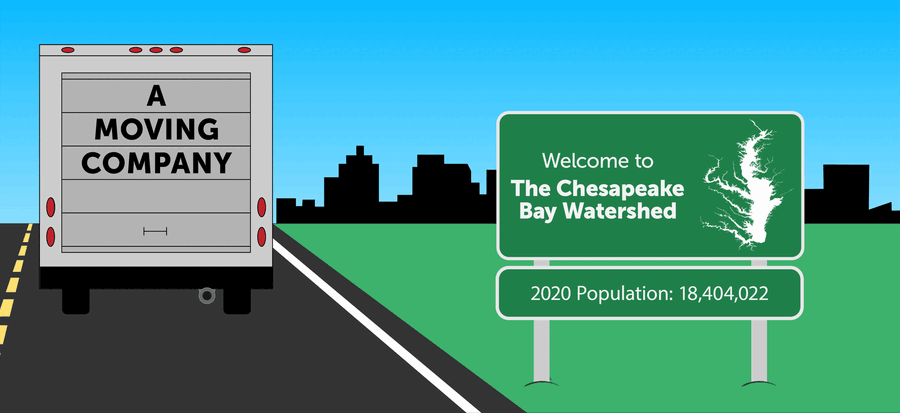Population Growth
The Chesapeake Bay region’s rapid rate of population growth has raised concerns over whether the watershed can continue to sustain the plants, animals and people that live here.
Overview
With its strong economy, diverse communities and rich natural and historic resources, it’s no wonder that more than 18 and a half million people call the Chesapeake Bay watershed home. But the region’s rapid rate of population growth has raised concern over whether the watershed can continue to sustain the plants, animals and people that live here.
How does population growth impact the Chesapeake Bay?
Land development
With a larger population comes more homes, roads, parking lots, stores and other developments. This growth often comes at the expense of important natural spaces, like forests or wetlands, which have to be cut down for space to be made. Forests and wetlands provide a variety of benefits to wildlife and the Bay. Both forests and wetlands are crucial for absorbing nutrient runoff which would otherwise pollute waterways and cause dead zones to form.
Stormwater runoff
In more developed areas, there are also more impervious surfaces, such as roads and parking lots. As opposed to natural land like forests, impervious surfaces do not absorb rainfall and instead send it directly into storm drains, rivers and streams, picking up nutrients, sediment and other pollutants along the way. Impervious surfaces can also lead to increased flooding, because there is less land to absorb rainfall and storm drains cannot handle all the water.
Wastewater
A larger population means more wastewater from homes, schools, businesses, farms, industrial facilities and other areas. Wastewater treatment plants are used to treat this water before it’s released back into rivers, streams and the Bay. But treatment plants can fail, either due to outdated technology or because they can’t keep up with the increased wastewater. Failing treatment plants release nutrient and sediment pollution into our waterways.
How has the region's population grown?

Show image description
The animated infographic shows a moving van driving toward a rapidly developing city. Next to the road is a sign that reads, "Welcome to the Chesapeake Bay watershed." A smaller sign shows the region's population. The 2022 population is 18.6 million people. As the city expands, the region's projected population grows larger. In 2030, the population is expected to be 19.7 million people. In 2040, it's expected to be 20.7 million. And in 2050, it's expected to be 21.7 million.
Since 1950, the human population in the Chesapeake Bay region has more than doubled. Between 1980 and 2023, this number rose roughly 45%, from 12.7 million people to 18.6 million people. While the rate of population growth is expected to slow in the coming years growth will likely exceed one million people each decade. The region's total population is expected to surpass 20 million people in less than 10 years.
Population growth varies from state to state and region to region.
Seventy percent of the watershed’s population lives in Maryland and Virginia.
Over the past 65 years, Delaware and Virginia have experienced the fastest rate of population growth in the watershed. Over the next 10 years, this distinction is expected to go to Washington, D.C.
Experts predict population will continue to rise in all watershed states, except for New York, where population is declining.
What you can do
To lower the impacts of population growth in the Bay watershed, consider reducing stormwater runoff. Install a green roof or rain garden to capture and absorb rainfall; use porous surfaces like gravel or pavers in place of asphalt or concrete; and redirect home downspouts onto grass or gravel rather than paved driveways or sidewalks.
